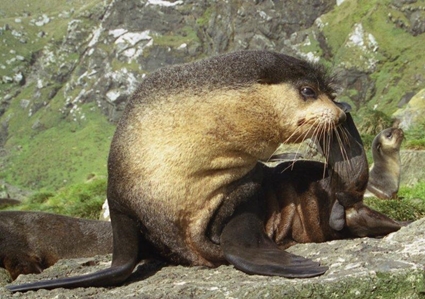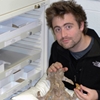General Description
Males have dark grey to brown fur across upperparts with pale orange-cream underside and lower face. A crest of longer white tipped hairs is found on the top of the head. Females have similar fur colouration to the males however do not have a white tipped crest. Both sexes have long white whiskers. Pups have black and orange fur and black whiskers. Up to 1.8 m long.
Biology
Subantarctic Fur Seals are only occasionally observed in Victorian waters and are potentially stranded individuals from islands in the South Indian Ocean. Breeding groups form in September and pups are born between November and February.
Humans interactions include:
Previously hunted for their fur. All colonies are now protected.
Habitat
Coastal and continental shelf waters, preferring rocky or boulder beaches.
Open water
Distribution guide
Southern Ocean, South Atlantic and Indian Oceans. Central Victorian coast and potentially in or near Port Phillip.
Species Group
Depth
Shore (0-1 m)
Shallow (1-30 m)
Deep ( > 30 m)
Water Column
Surface Midwater Above surface
Max Size
1.8 m
Diet
Carnivore
Commercial Species
No
Global Dispersal
Recorded in Australia
Conservation Status
- DSE Advisory List : Not listed
- EPBC Act 1999 : Vulnerable
- IUCN Red List : Least Concern
- CITES : Trade restrictions (Appendix II)





